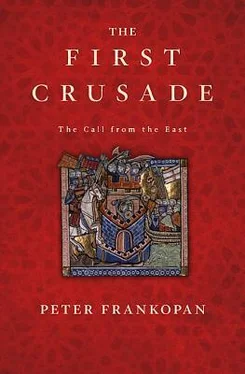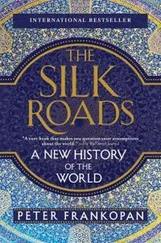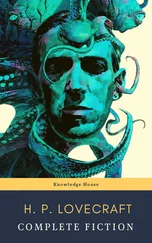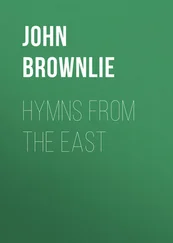6 The Call from the East
• 1. J-C. Cheynet, ‘Les Sceaux byzantins de Londres’, Studies in Byzantine Sigillography 8 (2003) pp. 85–100; also J-C. Cheynet, ‘Le rôle des Occidentaux dans l’armée byzantine avant la Première Croisade’, in E. Konstantinou (ed.), Byzanz und das Abendland im 10. und 11. Jahrhundert (Cologne 1997), pp. 111–28. • 2. For example, V. Laurent, Le Corpus des sceaux de l’empire byzantin II: L’administration centrale (Paris 1981), no. 469 (Bulgarian); G. Zacos, Byzantine Lead Seals II , compiled and ed. J. Nesbitt (Bern, 1984), no. 706 (interpreter to the English); ibid. (Anglo-Saxon); Laurent, Le Corpus des sceaux de l’empire byzantine , no. 991 (interpreter of the fleet). • 3. F. Schmitt (ed.), S. Anselmi Cantuariensis archiepiscopi opera omnia , 6 vols. (Edinburgh, 1938–61), 3, pp. 252–5. • 4. See, for example, J. Shepard, ‘The uses of the Franks in 11th Century Byzantium’, Anglo-Norman Studies 15 (1992), pp. 275–305. • 5. John Skylitzes, p. 486; Michael Attaleiates, pp. 122–5, Matthew of Edessa, II.19, p. 101. • 6. Patrologia Latina , 150, col. 737. • 7. Ekkehard of Aura, pp. 133–4. • 8. Gilbert of Mons, Chronique Hanoniense , tr. L. Napran (Woodbridge, 2005), 23, p. 25. • 9. Hagenmeyer, Epistulae , pp. 134–5. For some comments on this letter, above, pp. 60–1. • 10. Shepard, ‘How St James the Persian’s head was brought to Cormery’, p. 299. • 11. Narratio Floriacensis de captis Antiochia et Hierosolyma et obsesso Dyrrachio , RHC, Occ ., 5, p. 356, Gilbert of Mons, 23, p. 25. Also Becker, Urban II , 2, p. 180, and above all J. Shepard, ‘Cross-purposes: Alexius Comnenus and the First Crusade’, in J. Phillips (ed.), The First Crusade: Origins and Impact (Manchester, 1997), pp. 107–29 • 12. Ekkehard of Aura, pp. 134–6. • 13. Guibert of Nogent, I.5, pp. 102–3. • 14. Baldric of Dol, I, p. 14. 15. Fulcher of Chartres, I.3.ii–iii, pp. 65–6. • 16. William of Apulia, IV, p. 212. • 17. Sibt al-Jawzi, p. 244; Bar Hebraeus, 1, pp. 230–1. • 18. Raymond of Aguilers, XIII, pp. 108–9; William of Tyre, I.7, 1, pp. 116–17; Albert of Aachen, VI.31, p. 442. • 19. S. Goitein, A Mediterranean Society: The Jewish communities of the Arab world as portrayed in the documents of the Cairo Geniza , 6 vols. (Princeton, 1967–93), pp. 308–14. Also see here S. Goitein, ‘Jerusalem in the First Arabic period’, in Jewish Settlements in Palestine in the Beginning of the Islamic and the Crusade Period, in the Light of the Geniza (Jerusalem, 1980); M. Gil, ‘Political History of Jerusalem’, in J. Prawer (ed.), Book of Jerusalem, The First Islamic Period, 638–1099 (Jerusalem, 1991). • 20. See, for example, S. Gat, ‘The Seljuks in Jerusalem’, in Y. Lev (ed.), Town and Material Culture in the Medieval Middle East (Leiden, 2002), pp. 4–40. • 21. C. Cahen, ‘La chronique abrégée d’al-Azimi’, Journal Asiatique 230 (1938), p. 369. • 22. Ibn al-Athir, AH 491/Dec. 1097–Dec. 1098, pp. 13–14. • 23. See C. Morris, The Sepulchre of Christ in the Medieval West (Oxford, 2005), esp. pp. 134–9; however also note J. France, ‘The Destruction of Jerusalem and the First Crusade’, Journal of Ecclesiastical History 47 (1996), pp. 1–17. • 24. Guibert of Nogent, II.10, pp. 125–6. • 25. Below, pp. 118–19 • 26. J. Vaissète, C. Devic and A. Molinier (eds.), Histoire générale de Languedoc , 3rd edition, 16 vols. (Toulouse, 1872–1904), 5, cols. 737–8. • 27. J. Venier (ed.), Chartres de l’abbaye de Jumièges , 2 vols. (Paris, 1916), 1, pp. 121–3. • 28. R. Bautier, M. Gilles and M. Bautier (eds.), Chronicon S. Petri Vivi Senonensis (Paris, 1979), p. 140. • 29. Gregory Pakourianos, p. 131. • 30. Letopis Popa Dukljanina , 27, p. 413. • 31. Hagenmeyer, Epistulae , p. 136. • 32. Robert the Monk, I.1, p. 79. • 33. See, for example, T. Head and R. Landes (eds.), Peace of God: Social violence and religious response in France around the year 1000 (Cambridge, 1992). • 34. Ivo of Chartres, Panormia , VIII.147, in Patrologia Latina , 161, col. 1343 AC. • 35. See Vauchez, ‘Composantes eschatologiques’, pp. 233–43; J. Rubenstein, ‘How or How Much, to Re-evaluate Peter the Hermit’, in S. Ridyard (ed.), The Medieval Crusade (Woodbridge, 2004), pp. 53–69; J. Flori, L’Islam et la fin des temps. L’interprétation prophétique des invasions musulmanes dans la chrétienté médiévale (Paris, 2007), pp. 111–47; and more generally, Möhring, Weltkaiser der Endzeit and Whalen, Dominion of God . • 36. Lupus, Annales , MGH, SS , 5, p. 62. • 37. Gilbert of Mons, 23, p. 25. • 38. Theodore Skutariotes, Synopsis Khronike , in K. Sathas, Biblioteca Graeca Medii Aevi , 7 vols. (Paris, 1872–94), 7, pp. 184–5. • 39. For these and other fake relics, Guibert of Nogent, De pigneribus sanctorum , ed. R. Huygens (Turnhout, 1993), I, pp. 98, 88. • 40. Gesta Episcoporum Tullensium , in MGH, SS , 8, p. 647. • 41. Anna Komnene, III.10, p. 103. • 42. F-J. Schmale and I. Schmale-Ott (eds.), Frutolfs und Ekkehards Chroniken (Darmstadt, 1972), p. 96; Ekkehard of Aura, Chronicon Universale , in MGH, SS 6, p. 205. For the gifts recorded by Anna, Alexiad , III.10, p. 103. • 43. G. Constable (ed. and tr.), The Letters of Peter the Venerable , 2 vols. (Cambridge, Mass., 1967), 2, p. 209. • 44. Hagenmeyer, Epistulae , pp. 135–6. • 45. Guibert of Nogent, I.5, p. 103. • 46. Below, p. 106. • 47. Miracula S Augustini episcopi Cantuariensis , in Acta Sanctorum, May, 6, p. 410. • 48. Anna Komnene III.10, p. 102. • 49. Hagenmeyer, Epistulae , p. 141. • 50. Shepard, ‘How St James the Persian’s head was brought to Cormery’, p. 299. • 51. Hagenmeyer, Epistulae , p. 136. • 52. Ibid., p. 142. • 53. Alexios had developed a great sense of trust for Robert, according to Guibert of Nogent, I.5, pp. 100–1. • 54. Hagenmeyer, Epistulae , p. 133. • 55. Guibert of Nogent, I.5, p. 101. • 56. Bernold of Constance, p. 483. • 57. Anna Komnene, VIII.5, p. 224. • 58. Ekkehard of Aura, p. 136. • 59. Otto of Freising, Chronicon , in MGH, SS 20, VII, p. 248. • 60. Gregory VII, Register , I.18, p. 20. The original letter sent by the emperor does not survive. • 61. Gregory VII, Register , I.46, p. 51. • 62. Gregory VII, Register , I.49, pp. 54–5. • 63. Gregory VII, Register , II.31, pp. 122–3. • 64. Gregory VII, Register , II.37, pp. 127–8. • 65. Gregory VII, Register , II.3, p. 95. • 66. Gregory VII, Register , I.46, p. 51. • 67. Michael Psellos, Michaelis Pselli scripta minora magnam partem adhuc inedita , ed. E. Kurtz, 2 vols. (Milan, 1936–41), 1, pp. 329–34. • 68. Gregory VII, Register , II.3, p. 95. See here H. Cowdrey, ‘Pope Gregory VII’s “Crusading” plans of 1074’, in B. Kedar, H. Mayer and R. Smail (eds.), Outremer: Studies in the history of the Crusading kingdom of Jeruslalem (Jerusalem, 1982), pp. 27–40, and Becker, Papst Urban II , 2, pp. 294–300. • 69. Bernold of Constance, p. 520. • 70. Ibid. • 71. Fulcher of Chartres, I.1.iii, p. 62.
Читать дальше











